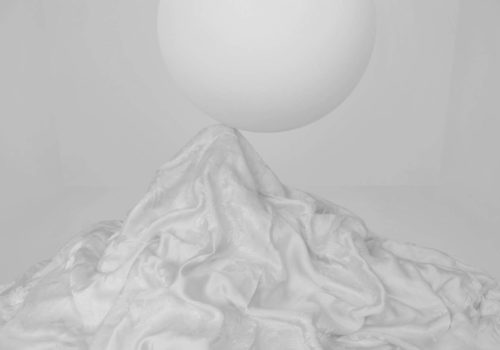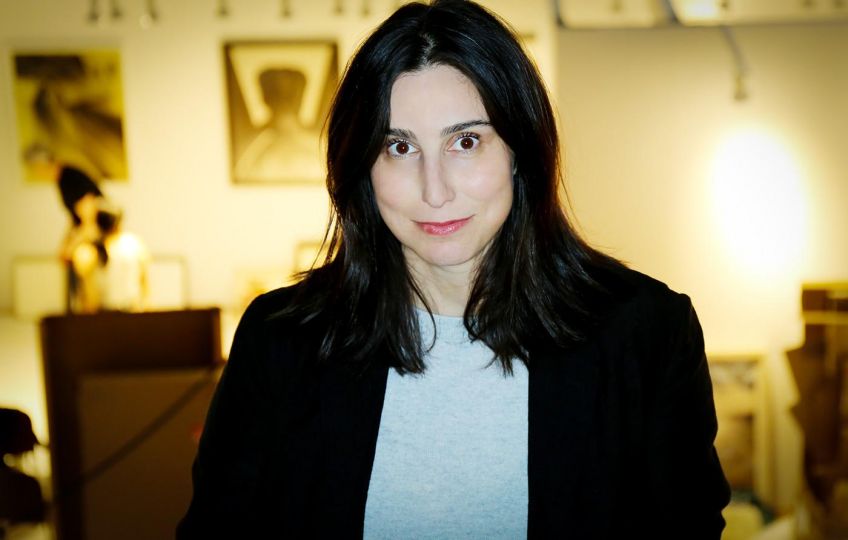Liu Yue (b. 1981 in Shanghai, China) started out as a painter, but he turned his focus to photography after graduation. His photographs, although outwardly simple, reveal surprising depth upon closer inspection. They manage to transform and question the essence of everyday objects. Each series is different, but many demonstrate the attention he pays to space, time, and the shapes and structural properties of objects. Yue shows the everydayness of something to reveal what makes it magical, calling into question our own perception of things. This talented young photographer has already drawn the attention of several international cultural institutions, including Paris Photoquai in 2011, organized by the Musée du Quai Branly.
Marine Cabos: Do you remember your first experience making photography? What motivated you?
Liu Yue: In the past when cameras did not exist yet, people used other means to express their artistic sensibilities. There were for instance painting and sculpture among others. Today people have plenty of choice thanks to all the development and progress achieved in general. Photography – despite its invention one hundred year ago – remains a new medium that possess a radically different feature compared to what we have known before. Photography is anchored to contemporaneity, it is opposed to usual notions of determinism and speed, what you see is pretty much what you get, but to get what you see is actually complicated. I think this medium is pervaded by contradictions and trickery, which can reveal and conceal at the same time. I really started to create artistic photographs after university, but until now I never considered myself as a photographer for photography remains a part of my creative process. Nevertheless, it happens sometimes that photography is the only way to express myself, but it is more a passive decision, my passivity determines the medium in the end.
MC: What are the steps when you start a new body of artworks?
LY: Let me give an example. Before we start our conversation, we had in mind a clear vision of the goals and the expectations we might have towards to final result (if not, it would be impossible to get logical and rational questions or to obtain clear answers). But in truth we never know what the outcomes will be. In other words, this is an unknown condition determined by time, a subjective way do expound a predetermined paradox. While we are speaking, we cannot know what will be the consequences, still it seems that before obtaining any real result we try to deduce it. Such process makes us move towards an unknown path that goes beyond predetermined judgment. This quest for the knowable and the unknowable, this sort of contradictory chaos, fascinates me.
When I create something, even though it is triggered by a subjective desire, I certainly cannot guess what will be the final outcome. No matter how hard I try to control or plan it, it remains very misleading. The final artwork tends towards an unknown normality, more natural, more accurate. I want to explore this kind of coercible concept as well as things that look natural. I do not have any fixed plan that would allow me to follow a stable and sufficient guideline. My creative process merely consists in the formal expression of difficulties or issues I am facing. Maybe I will create an artwork using this method, maybe another one differently, it depends. I do not want my works to be based on safe and reliable methods, even though the final result engender an atmosphere opposed to calm and harmony.
I find guidelines through common objects. I try to unveil their essence, which is itself conditioned by time. Under these limited conditions, I strive to feel these important yet so insignificant things. To look straightforwardly at an object enable also to make the audience understand other things that seem trivial. This banality is gradually emphasized and the information is enlarged, it becomes then not that ordinary. Perhaps it is simply the real appearances of things in their natural condition.
MC: In your series Echo (2011), did you tried to investigate into the various definition of this very word or is it rather an exploration of how we perceive things? What did you wanted to convey?
LY: I wanted I guess to express something abstract, which goes beyond sensory experience. I cogitate about ‘echo’ in the literal sense, which possesses a clear definition and makes us think about things that usually look normal. But in the end, what sensations brings the word ‘echo’? What does it mean? We have no clue. We understand it as a phenomenon, for instance when a sound reverberate against an object or a wall. Consequently, we believe the person who produced the sound created its reverberation, but in reality the space surrounding us produced it, and we have no idea what it means. It is a mere phenomenon we experience in a space, a mysterious and natural power, inevitable and unknown. Hence the exhibition’s foreword is just a reminder of how people interpret ‘echo’; I would like to change the viewer’s unilateral vision of things.
In this series, you will notice that all objects manifest emptiness, nothingness. They do not have materiality, or quality, or temporality. For example, there are silk-satin quilts in some of my works; from a material perspective, they seem beautiful, soft, and normally cannot bear a heavy weight. However, they transform into a form that has nothing to do with the original material, as if they were sorts of imposing chevrons, which refute what people thought of the inner properties of the object. The spheres above are deprived of characteristics and value; some of them are just the subtle trace left by the surface of a polished sphere, fine and delicate. In general, my works are timeless for the setting does not communicate any historical or everyday life information. The settings create something indescribable (devoid of meaning, order, and going beyond our understanding). Interestingly, these quilts, spheres, and settings among other elements belong to the real world but they have been abstracted from their initial contexts so that to become something paradoxical and empty.
It is as if we were looking at things with a magnificent and ancient light, which allow us to move beyond the frame of what we know and admire their truth beauty. It is like when we have been told to be man or woman, and after we will take decision according to this assumed truth. Once we detach ourselves from usual definitions, we can really ask ourselves who we are. Maybe these definitions are based on external appearances or phenomenon, but being detached will help to discover one’s nature at least.
In my works, the appearances of things are rather contradictory and surrealists. When we look closer, we find out the points of contact between all these objects is minuscule and the apparent supports are actually implausible. We cannot imagine these kinds of materials appearing in such a way. All the links between the objects, including their relationship with the space, have been purified, reworked; they are unique. As if we were able to get rid of our prejudices in order to look at things abstracted from reality, in order to face them by using a more natural approach. By doing so, things are even more beautiful and vibrant.
MC: Is minimalism an accurate noun to qualify your approach?
LY: The word minimalism certainly cannot define all my works. From an historical perspective, this term was first bound with modernism and then shifted to postmodernism’s ideas. Its definition is not clear and relates to a specific period. At that time, the idea was to focus on forms and to transcend things. Afterwards, everyone strongly hoped postmodernism would have proposed a continuation but more importantly a conclusive summary. Yet it engendered countless definitions and partial understandings. Nowadays our world is still postmodern, which causes a substantial paradox for we are still employing modernist approaches to judge postmodernist phenomenon. When you want to cluster artists doing similar things, you have to go through thousands of definitions of various art styles, for instance op art and western modern art influenced Japanese Mono-ha. Interestingly, it gives me the false impression that so far everything has been based on misconceived ideas and thinking in such a way is pretty postmodern. In fact it seems hard to believe in a knowledge that derives from different fragments.
In my opinion, what an artwork conveys or contains remains a latent form of personal experience. No matter this idea pertains to oriental philosophy, or postmodernism, or ancient aesthetics, it will never be possible to describe it with an ‘-ism’.As If after the discovery of plants possessing large leaves we would have the habit to classify all the other plants with big leaves all together, without realizing the first one has nothing in common with the second.
MC: What are your expectations about the future?
LY: I will always have the opportunity to have exhibitions here and there, but they are always the same and I am not sure about their benefits. I want to reuse old concepts from older works but in a more rational and efficient manner. I already have plenty of artworks and large-scale ones that I would like to create. I hope I will have the chance to exhibit them more clearly because people misconceive my work. Although it might be not that important, an artwork’s formulation and introduction participate in the magic of art. This is why I would like to write more about what I create; I wish to write a book for instance. Off course I will not neglect other mediums.
Moreover, I hope I will find a space that suits my works perfectly . It is not that urgent, only an ideal idea. I am convinced that an artwork just created can have a great impact on the viewer, and giving such a feeling is very important. I hope I will show artworks even more perfect and extreme.
Marine Cabos
















